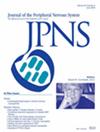Neuralgic amyotrophy presentation of acute intermittent porphyria: A case report
Abstract
Background and Aims
Porphyrias are inherited metabolic disorders caused by mutations in genes encoding enzymes involved in the heme biosynthetic pathway, leading to the accumulation of heme precursors. Acute hepatic porphyrias (AHP), including acute intermittent porphyria (AIP), can present with predominant peripheral neurological manifestations, often leading to a misdiagnosis as Guillain-Barré syndrome.
Methods
We report a case of AIP initially presenting as a peripheral neuropathy mimicking Parsonage-Turner syndrome (neuralgic amyotrophy, NA). Clinical and electrophysiological evaluations were conducted, including nerve conduction studies and needle electromyography (EMG).
Results
A 41-year-old woman presented with burning pain and electric shock-like sensations in the shoulders and trunk, alongside asymmetrical motor weakness in the upper limbs affecting arm abduction and finger extension. Electrophysiological evaluation revealed involvement of the superior trunk of the brachial plexus and the posterior interosseous nerve. Initially diagnosed with NA, she showed significant improvement in proximal strength over nine months but relapsed at fourteen months with severe finger extension weakness. Concurrent severe abdominal pain with constipation led to the identification of elevated urinary porphobilinogen (PBG) and delta-aminolevulinic acid (ALA) levels, confirming AHP and specifically AIP via genetic and biochemical testing. The patient received hemin and givosiran infusions, resulting in decreased ALA levels, improvement of motor weakness, and no further attacks.
Interpretation
This case underscores the need to consider AIP in the differential diagnosis of acute neuropathies like NA, especially when accompanied by abdominal pain and severe constipation. Early recognition and appropriate testing for PBG and ALA can prevent misdiagnosis and enable targeted treatment.

 求助内容:
求助内容: 应助结果提醒方式:
应助结果提醒方式:


